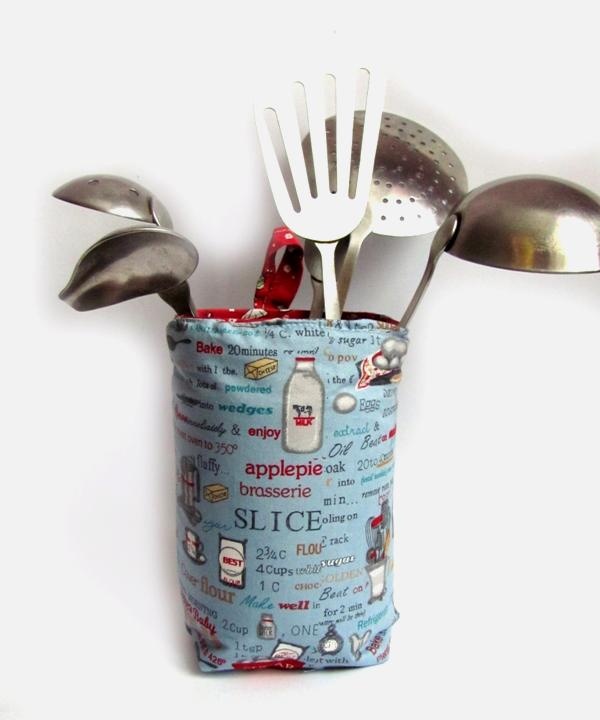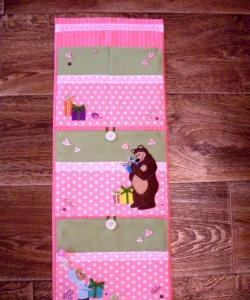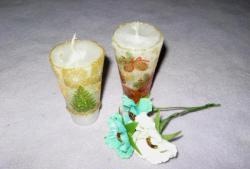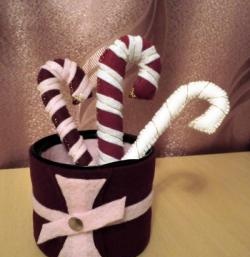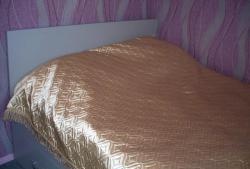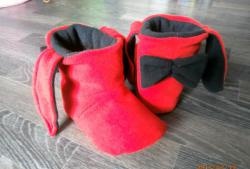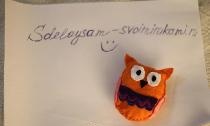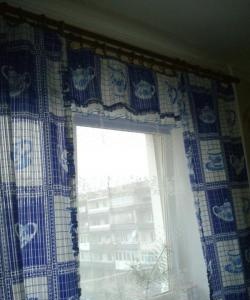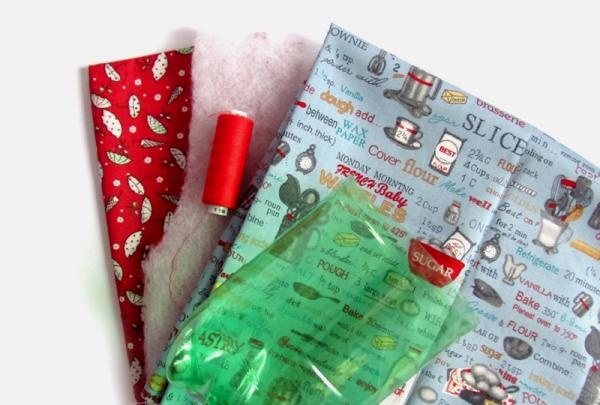
Pattern modeling. The water container will be the main component of the cup. Textile parts must clearly fit its dimensions.To avoid mistakes in cutting parts and choose the correct size of cotton elements, measure the width of the neck and the height of the plastic cup.
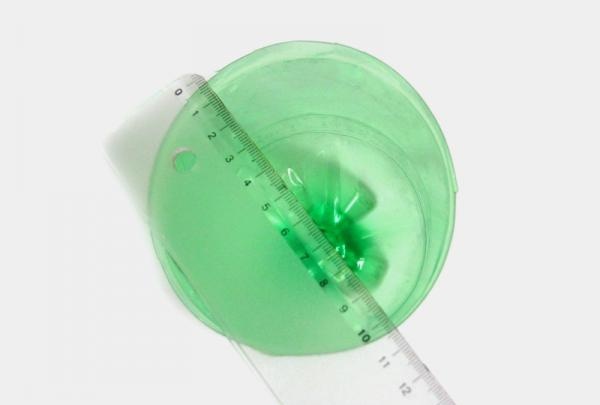
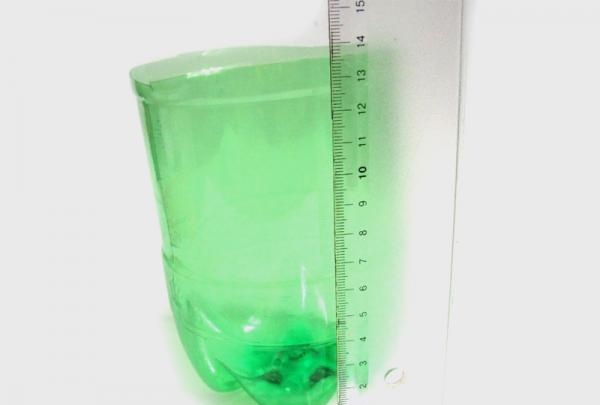
In this case it is 10 and 13 cm, respectively. Multiply the width of the cup (10 cm) by 3.14 and add 3 cm (10x3.14 + 3 cm = 35 cm), to the height of the cup (13 cm) add half the diameter of the neck (10/2 = 5 cm) and another 4 cm (13+5+4 = 22 cm). Cutting and assembling parts. Cut two rectangles measuring 35x22 cm from blue and red cotton.
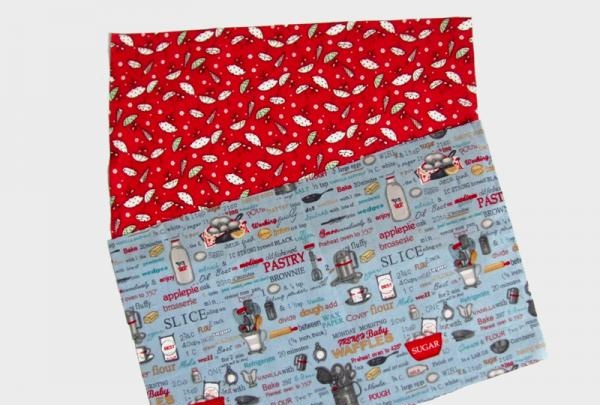
Reinforce each part from the inside with non-woven fabric.

Take the fabric intended for the outside of the cup. Pin the synthetic padding polyester ironed through a damp cloth to the reverse side.

Fold the fabric in the middle and sew a straight stitch along three sides.

Using sharp scissors, cut the synthetic padding from the outside of the seam.
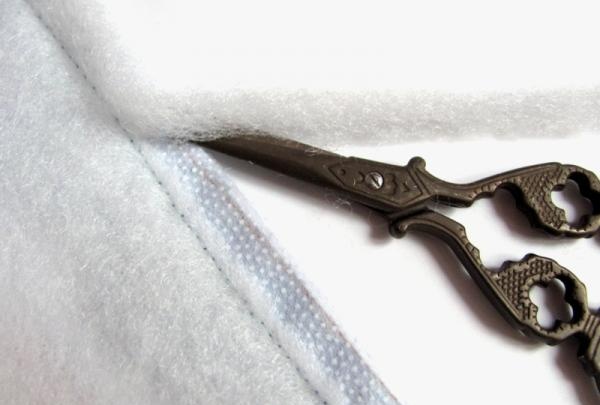
Grasp the corners and align the base seam and the side seam.

Step back 5 cm from the top of the corner and make a straight stitch, thereby forming the volume of the bottom. Process the second corner in the same way.

It should look like a glass.

Make the inner cover in the same way, but without padding polyester.
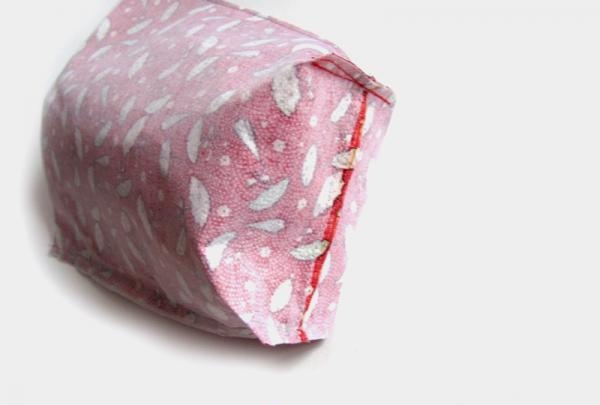
These should be the main details of the cup at this stage.
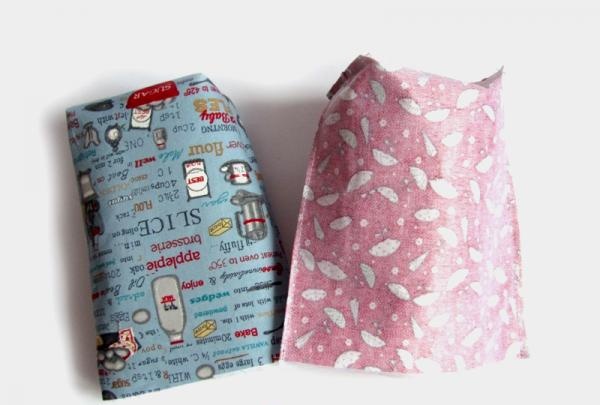
Insert a plastic container into the outer cup and the inner cover into it. Fold the edges of the fabric pieces inward and secure them with tailor's pins or a basting stitch.
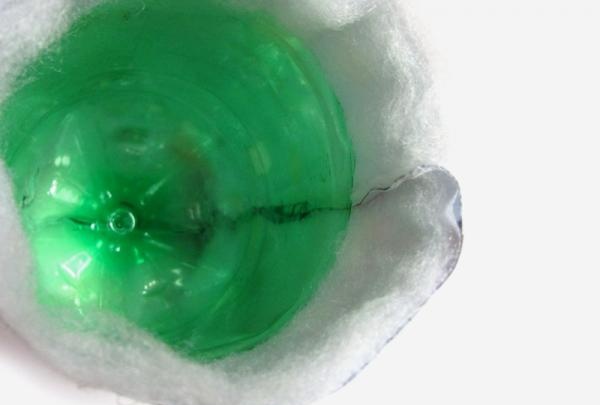

Make a loop out of red cotton. Insert it between the pieces. To finish the job, lay a straight or decorative stitch around the perimeter of the cup.
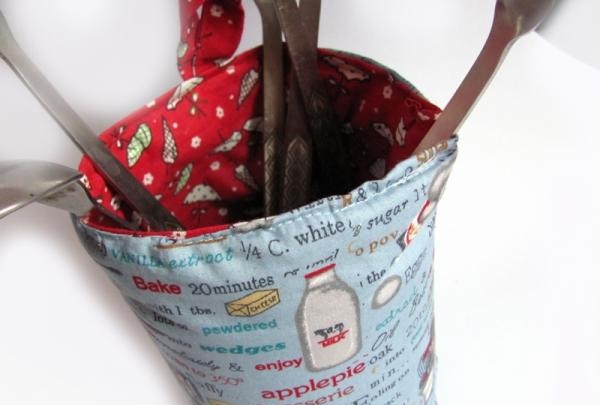
The textile cup for kitchen accessories is ready!
